Vertebrates Midterm 1
1/26
Earn XP
Name | Mastery | Learn | Test | Matching | Spaced |
|---|
No study sessions yet.
27 Terms
What is the role of the Apical Ectodermal Ridge in limb development
major signaling center that directs limb formation
What is the role of the mesoderm in limb development
Gives rise to bones and determines what limb you get
What is the role of the myotome in limb development?
Gives rise to muscles
5 structures that are formed from the pharynx or pharyngeal pouches in vertebrates that do not have permanent gill slits.
Middle ear bones, parathyroid glands, palatine tonsils, Eustachian tube, thymus
List the 6 shared derived characters of vertebrates
Cranium,
Tripartite brain,
special sensory organs,
gills,
neural crest cells,
multi-chambered heart
“Agnathans” are more derived than urochordates in having which feature?
Visceral arch skeleton, tripartite brain, cranium
Are vertebrae a vertebrate synapomorphy?
No, different types of bone may have evolved independently in different lineages
Describe the 4 primary skeletal adaptations found in birds:
Hollow bones,
reduction number of bones,
keeled sternum,
shortened humerus
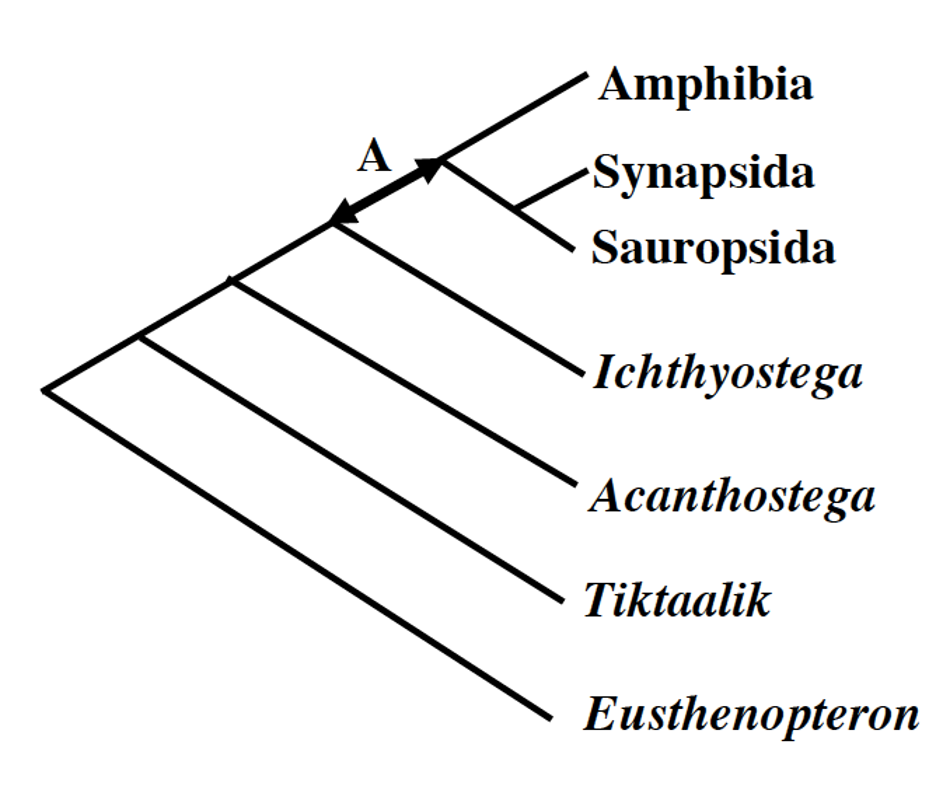
Which character evolved on branch A of the cladogram shown below?
Pentadactyly

The phylogenetic tree below is divided into four groups (A,B,C,D). Which group or combination of groups is polyphyletic (Grouping with no common ancestor)?
C + A
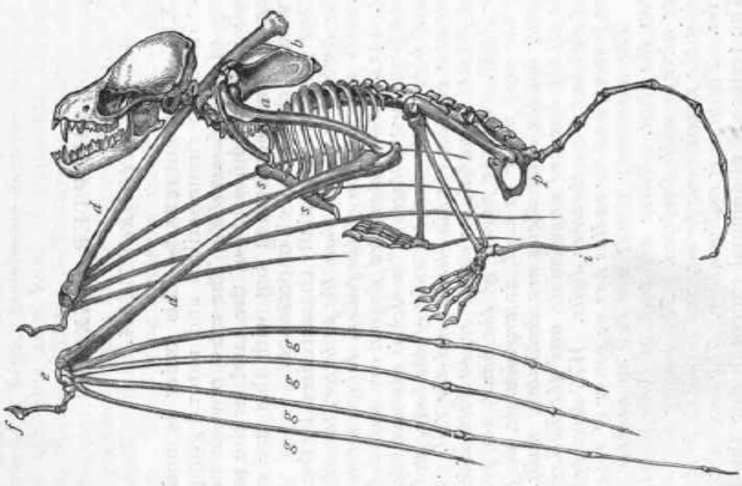
Which feature of the skeleton shown below evolved most recently?
Greatly elongated phalanges
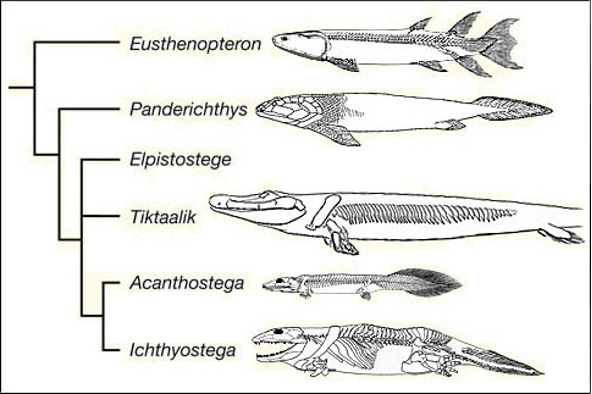
Which feature evolved on branch A?
Limbs with digits
1. Which statement concerning the middle ear of a frog is correct?
i. The middle ear is triossicular
ii. Sound waves that impinge on the tympanic membrane are amplified by pressure amplification in the middle ear
iii. The columella of the middle ear is homologous to the hyomandibular bone of bony fishes
ii and iii are both true
1. What can we infer from ventrally grooved ceratobranchials (animal HAD gills) in adult animals belonging to Acanthostegidae and Ichthyostegidae?
i. That these animals possessed gills
ii. That these animals did not possess lungs
iii. That these animals spent much of their time in aquatic environments
i and iii
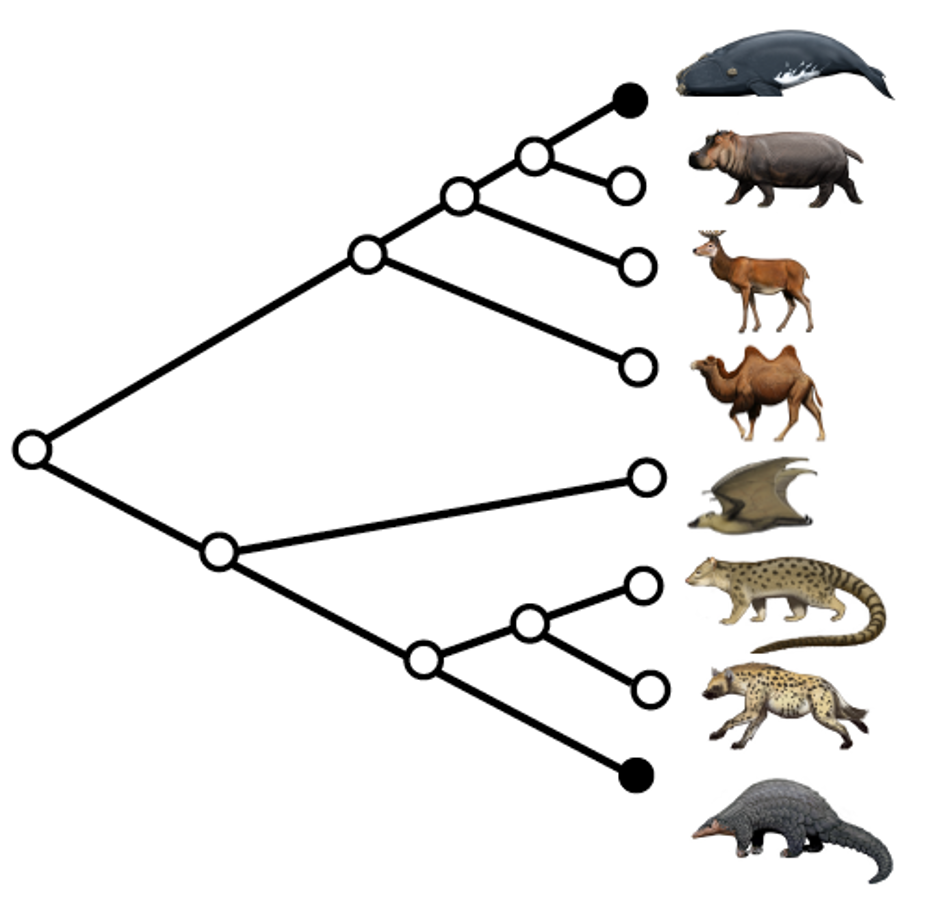
The tree shown below depicts phylogenetic relationships among eight mammals. Nodes with filled (black) circles represent mammals without teeth. Terminal and internal nodes with open circles represent mammals with teeth. The name Adentata refers to a taxonomic group that includes all taxa without teeth. The name Dentata refers to a taxonomic group that includes all taxa with teeth. Given this information, which statement is true?
Adentata is a paraphyletic group
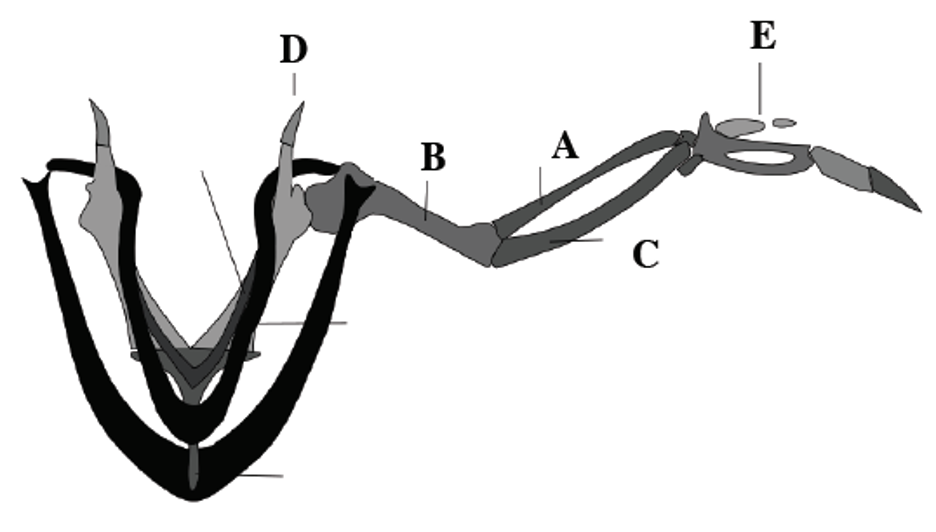
Which element in the bird skeleton shown below is homologous to the basal pterygiophore in the pectoral fin of Eusthenopteron?
B
Snake eggs
Yolk- macrolecithal
Cleavage- meroblastic/discoidal
Spindle angle- equatorial
Blastocoel- between epiblast and hypoblast, flat
Squirrel eggs
Yolk- microlecithal
Cleavage- holoblastic/radial
Spindle angle- meridional
Blastocoel- large sphere
Tripartite brain
anterior end of dorsal hallow nerve cord enlarged into tripartite brain, mesencephalon
Special Sensory Organs
develop into conjunction w/ cranium & tripartite brain
Gills
efficient at pumping water through pharynx.
Neural crest cells
originate during neurulation; gives rise to receptor cells, sensory nerves, and sensory ganglia.
Multi-chambered heart
more efficient for delivering oxygen to various tissues and organs.
What are the names of the two bones that make up the craniomandibular joint?
Quadrate and Articular
What is the function of the dm muscle?
Causes myotonic dystrophy which causes weakness of voluntary muscles; opens jaw
in proximal/distal axis of limb generation, what gene/molecule levels are required for the humerus/femur
Proximal/distal axis = shoulder to digits
Concentrations of retinoic acid, Gli, Fgf, Wnt determine which part of limb is created using Hox genes.
Hox 9 and 10- high ret and gli, low fgf wnt.
Steps of neuralation
Neural plate formation where the ectoderm thickens to create a neural plate
Neural plate folding where the neural plate bends inwards to form a neural groove
Neural fold elevation where the edges of the neural groove rise up as neural folds
Neural tube closure where the neural folds meet and fuse together to form a closed neural tube